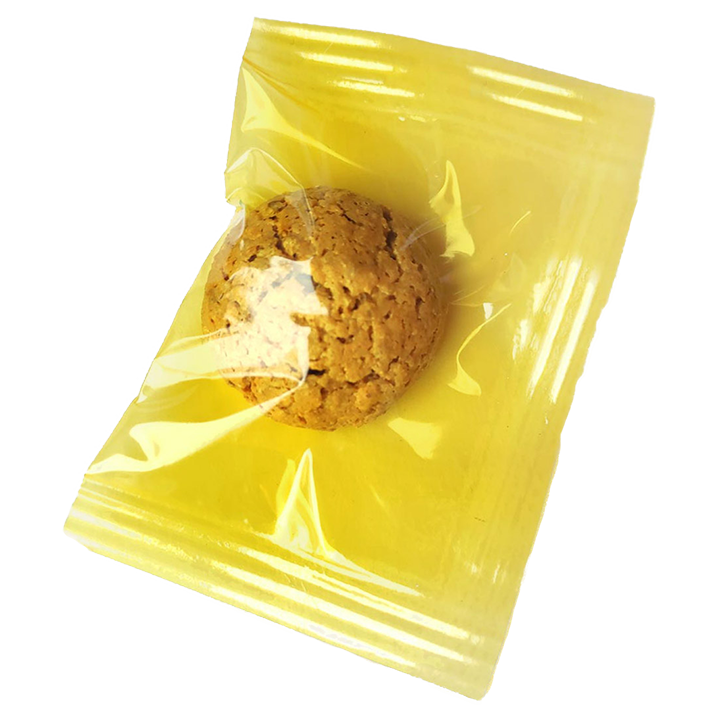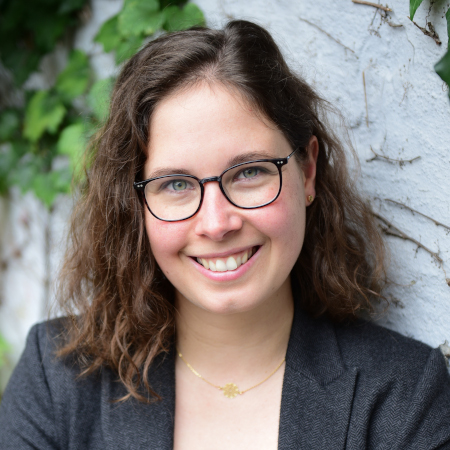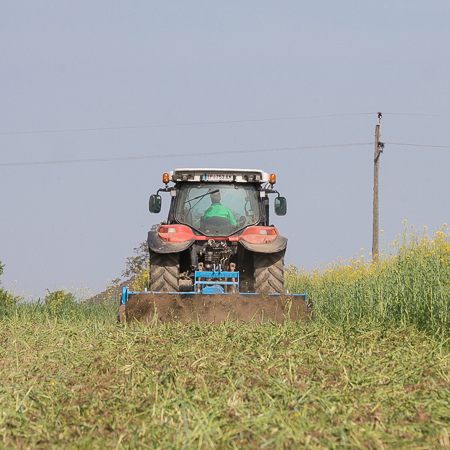06.04.2022 News
Chemistry Animals Biotechnology/Systems biology
Cracking the natural code of chitin
How is chitin produced by nature? Researchers want to uncover this in order to make the biopolymer useful for medicine.
06.04.2022 News
Chemistry Animals Biotechnology/Systems biology
How is chitin produced by nature? Researchers want to uncover this in order to make the biopolymer useful for medicine.
07.04.2022 News
Chemistry Plants Chemistry
BASF's Care Chemicals is expanding its portfolio of sustainable cosmetic products with a bio-based surfactant made from soy protein.
11.04.2022 News
Agriculture and forestry Plants Plant breeding research
Researchers from Osnabrück, Munich and Berlin have developed ZIN 168 and ZIN 186, the first apple varieties in Europe to be officially certified as allergy-friendly.
13.04.2022 News
Energy Plants Agriculture sciences
The Giant Miscanthus is intended to become a feedstock for sustainable fuel alternatives on marginal lands.
19.04.2022 News
Machine and plant engineering unspecific Plant and process engineering
Researchers want to optimize existing recycling concepts for the efficient reuse of raw materials from rotor blades of old wind turbines.

11.04.2022 Product
Consumables Waste
Instead of producing polymers synthetically, take what nature has already produced: A special technology can be used to extract biopolymers from agricultural residues - making them not only naturally degradable, but even edible.
21.04.2022 News
unspecific unspecific unspecific
This year, the German Federal Ministry of Education and Research is once again calling on young researchers from all over the world to apply for the Green Talents Award with innovative ideas for a sustainable future.
20.04.2022 News
Agriculture and forestry Plants Forestry
An international research project is developing sustainable forestry concepts for Mediterranean, continental, alpine and boreal forests.
03.05.2022 Success story
Chemistry Waste Chemistry
Originally, a research team was looking for a bio-based flame retardant - but they found much more.
27.04.2022 News
Chemistry unspecific Chemistry
A research alliance is developing iron-containing molecules that will save energy and raw materials in important chemical processes.
22.04.2022 Studies and statistics
Food unspecific Nutritional sciences
According to a study by the University of Osnabrück on the acceptance of in vitro meat, 47% of consumers surveyed said they would eat a lab-grown burger more often instead of conventional meat.
29.04.2022 News
Food Plants Agriculture sciences
To secure the world's food supply, industrialised countries would not have to give up meat completely, but drastically reduce their consumption - according to an overview study by researchers at the University of Bonn.
03.05.2022 News
unspecific unspecific Biodiversity
Two-thirds of the biodiversity targets the United Nations plans to adopt this fall also slow global warming.

26.05.2022 Interview
unspecific unspecific Environmental technology
In the FOOTPRINTS project, a team led by researcher Nadine Mengis is investigating how CO2 emissions must develop in order to stabilize global temperatures and thus achieve the Paris climate goals.
05.05.2022 News
Agriculture and forestry Plants Agriculture sciences
A field robot that independently detects and removes weeds has successfully passed an initial test run in the Uckermark region.
04.05.2022 News
unspecific Plants Biodiversity
The plants secrete large amounts of sugar into their root zone, but only a few species of bacteria feed on it.
09.05.2022 News
Agriculture and forestry Plants Forestry
Two important plant hormones intensify each other's effect. The opposite is the case with annual plant species.
12.05.2022 News
unspecific unspecific unspecific
The start-up competition "PlanB - Biobased.Business.Bayern" is entering its fifth round. As of now, start-ups with their innovative bioeconomy business ideas can again apply for funding.
18.05.2022 News
unspecific Plants unspecific
A new study underscores the importance of protecting peatlands and similar areas for climate protection.
17.05.2022 News
Food Plants Agriculture sciences
To expand its portfolio of vegetable proteins, Südzucker subsidiary Beneo plans to build a production facility for protein concentrate from field beans.
16.05.2022 News
Food Microorganisms Agriculture sciences
If meat consumption were reduced by one-fifth, deforestation would be cut in half and fewer greenhouse gases would be produced.
20.05.2022 News
Agriculture and forestry Plants Agriculture sciences
The cultivation of pome and soft fruit under photovoltaic systems is being tested in a large-scale trial at five locations in Baden-Wuerttemberg.
Tue, 06/14/2022 - 12:00 In-depth report
unspecific unspecific unspecific
On the way to a biobased and climate-neutral economy, new value chains are emerging. With the Bioeconomy Innovation Spaces ("Innovationsräume Bioökonomie"), the Federal Ministry of Education and Research is funding four large networks that aim to bring innovative approaches for the biobased economy into application more quickly. A portrait of the four Bioeconomy Innovation Spaces.
23.05.2022 News
unspecific unspecific unspecific
In a position paper, the German Biomass Research Center explains why Russian natural gas can only be replaced by biogas to a limited extent - and makes recommendations for future biogas policy.
24.05.2022 Success story
Agriculture and forestry Plants Agriculture sciences
Researchers want to establish environmentally friendly fertilizer for agriculture from manure and leaves, thus offering farmers and municipalities a new source of income.
29.05.2022 News
Food Plants Agriculture sciences
A combination of dietary change and emissions pricing would make the food system more sustainable, concludes a study by the Potsdam Institute.
01.06.2022 News
Chemistry unspecific Chemistry
An international research project is seeking sustainable alternatives to petroleum-based products.
07.06.2022 News
Energy Microorganisms Biotechnology/Systems biology
Specially adapted bacteria enable the energy carrier to be bound and released again in a controlled manner.
08.06.2022 News
Construction Waste Plant and process engineering
A new recycling process cleans mine water and sludge from toxins and recovers contained valuable materials.
31.05.2022 News
Agriculture and forestry Microorganisms Biotechnology/Systems biology
A recently discovered enzyme from cyanobacteria opens up new options for biotechnology.
09.06.2022 News
unspecific unspecific Bioökonomie mitgestalten
Germany and the Australian state of Queensland want to cooperate more in the future on green hydrogen - and in bioeconomy research.
15.06.2022 News
Energy Plants Chemistry
A new process will use green hydrogen to convert CO2 produced during biogas production into methane.
10.06.2022 News
Chemistry Waste Biotechnology/Systems biology
Saarbrücken researchers show the potential that spent grain could have for healthy and sustainable food production in the sense of a circular economy.
09.06.2022 Success story
Chemistry Waste Chemistry
Many plastic and rubber products cannot do without plasticizers, but a bio-based alternative is not easy to develop.
13.06.2022 News
unspecific Microorganisms Biotechnology/Systems biology
Microbial cell factories are important tools of the bioeconomy. Now researchers can identify the best among equals.
07.11.2022 News
Construction Plants Agriculture sciences
A new research project aims to tap the potential of residual and waste materials from hemp processing - especially their use for energy.
09.11.2022 News
Agriculture and forestry Plants Plant breeding research
Genetic analyses of old landraces of winter barley have led plant researchers from Gatersleben to discover a molecular mechanism that can be used to produce virus-resistant barley varieties.
10.11.2022 News
Agriculture and forestry Plants Plant breeding research
Plant researchers from Tübingen have investigated epigenetic marks in a crop plant - the field penny-cress. These adapt to the climatic conditions of a site.
14.11.2022 News
Chemistry Plants Biotechnology/Systems biology
The Potsdam-based start-up Targenomix uses systems biology and bioinformatics to develop new crop protection products.
15.11.2022 Success story
Chemistry Microorganisms Biotechnology/Systems biology
Researchers have developed a novel microbiological manufacturing process that can produce prebiotics and sweeteners sustainably and efficiently.
21.11.2022 News
Chemistry Waste Biotechnology/Systems biology
Researchers in Hamburg want to tap new sources of raw materials - straw, to be precise - in order to obtain cellulose fibers for the textile industry.
25.11.2022 News
Agriculture and forestry Plants Biodiversity
Researchers reconstructed the distribution of global plant diversity and used it to create a world map showing where and how many plant species exist.
23.11.2022 News
unspecific Microorganisms Biodiversity
A silicone sponge can be used to detect bacteria that cannot be cultured in the laboratory and to analyze their DNA.
Thu, 11/24/2022 - 12:00 In-depth report
unspecific Microorganisms Biotechnology/Systems biology
Producing new, high-quality plastics from plastic waste - not only chemistry but also biotechnology offers promising recycling approaches for this. This dossier explores how enzymes help degrade polymers and how bio-based plastics can be optimized for the circular economy.
22.11.2022 News
Agriculture and forestry Plants Biotechnology/Systems biology
The Gregor Mendel Foundation has awarded the Innovation Prize to researchers Nils Stein and Martin Mascher from the Leibniz Institute of Plant Genetics and Crop Plant Research (IPK) in Gatersleben for their contributions to decoding the complex genomes of wheat, barley and rye.
30.11.2022 News
Chemistry Microorganisms Biotechnology/Systems biology
Researchers at TU Dresden work on sustainable stage design made of a composite material with fungal mycelium. The corresponding premiere is at the beginning of December in Munich.
02.12.2022 News
Food Plants Agriculture sciences
A flexible vertical greening system developed by Fraunhofer researchers has reached market maturity after years of research.

28.04.2023 Interview
Agriculture and forestry Plants Agriculture sciences
Carsten Paul has investigated how effective carbon farming measures are and what role so-called humus certificates play in this.
05.12.2022 News
Chemistry Plants Agriculture sciences
Researchers at the University of Hohenheim want to make proteins from plants from meadows and pastures usable for the bioeconomy. A protein extract for animal feed has already been obtained.
08.12.2022 News
unspecific Microorganisms Biotechnology/Systems biology
Gene scissors are an important tool in genome editing, but they originated in the battle between bacteria and phages.
07.12.2022 News
Chemistry Microorganisms Agriculture sciences
The Deutsche Forschungsgemeinschaft (DFG, German Research Foundation) is funding 13 new collaborative research centers at universities with a total of 166 million euros - including two on the bioeconomy.
17.04.2023 Interview
Agriculture and forestry Plants Agriculture sciences
Agricultural scientist Hans W. Griepentrog wants to replace synthetic chemical pesticides with the help of state-of-the-art technology.
12.12.2022 News
Energy Plants Biotechnology/Systems biology
With the help of an innovative plasma technology, researchers have paved the way to protect grain from pests and thus make it last longer.
14.12.2022 News
Chemistry Microorganisms Biotechnology/Systems biology
Heat-resistant enzymes could be incorporated into biodegradable plastics to accelerate their decomposition.
20.12.2022 News
Chemistry Waste Chemistry
Traceless has developed a pilot product from its innovative biomaterial, which is currently being used in a Hamburg store of the C&A fashion chain.
19.12.2022 News
Chemistry Microorganisms Biotechnology/Systems biology
A worldwide consortium with the participation of the University of Erlangen-Nuremberg aims to advance the genome sequencing of eukaryotic unicellular organisms and make it available as a resource for the bioeconomy.
15.12.2022 News
Energy Waste Chemistry
A new reforming process generates another source of fuel from biogenic waste.
21.12.2022 News
Agriculture and forestry Plants Agriculture sciences
Researchers have discovered how the cabbage white butterfly detoxifies toxic mustard oils from its food source.
22.12.2022 News
Agriculture and forestry Plants Agriculture sciences
Exotic spices are key to baking cookies. But instead of coming from India, vanilla and pepper could soon come from domestic indoor farms.
02.01.2023 News
Food Plants Biotechnology/Systems biology
Improving the taste and consistency of plant-based meat substitutes is the focus of a new research partnership between Holzminden-based Symrise AG and Wageningen University in the Netherlands.